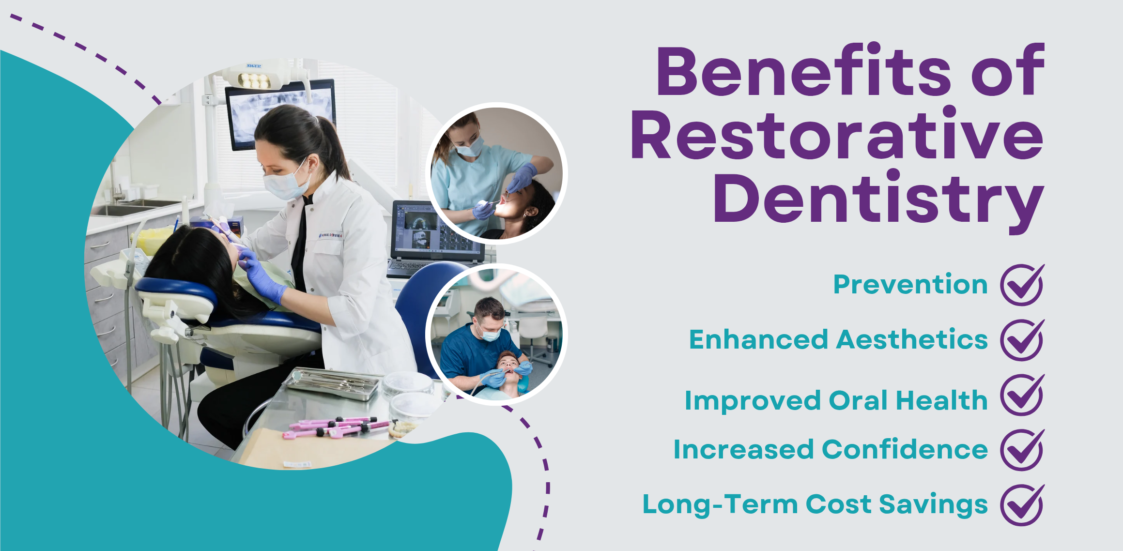Exploring the Benefits of Restorative Dentistry for Gum Disease Patients
Gum disease, also known as periodontal disease, is a common oral health issue that affects millions of people worldwide. It can lead to serious complications if left untreated, including tooth loss and deterioration of the jawbone. Fortunately, restorative dentistry offers numerous solutions to help patients recover from the damaging effects of gum disease.
In this comprehensive guide, we will explore the benefits of restorative dentistry for gum disease patients, highlighting the importance of timely treatment and the options available for restoring oral health.
What is Restorative Dentistry?
Restorative dentistry focuses on diagnosing, preventing, and treating oral diseases, as well as restoring the function and aesthetics of the teeth and gums. It encompasses a wide range of procedures designed to repair damaged teeth, replace missing teeth, and restore overall oral health.
Key Goals of Restorative Dentistry
- Restoring Functionality: Ensuring that patients can chew, speak, and smile comfortably.
- Aesthetic Improvement: Enhancing the appearance of teeth and gums for a more confident smile.
- Preventing Further Damage: Addressing existing dental issues to prevent future complications.
Understanding Gum Disease
Gum disease is an inflammatory condition affecting the gums and the structures supporting the teeth. It typically begins with gingivitis, characterized by red, swollen gums that may bleed during brushing or flossing. If left untreated, it can progress to periodontitis, leading to the destruction of the supporting bone and tissues.
Common Symptoms of Gum Disease
- Red, swollen, or tender gums
- Bleeding during brushing or flossing
- Persistent bad breath
- Receding gums
- Loose or shifting teeth
The Role of Restorative Dentistry in Treating Gum Disease
Restorative dentistry plays a crucial role in managing and reversing the effects of gum disease. Here are some of the primary benefits:
1. Rebuilding Damaged Teeth
Gum disease often leads to weakened or damaged teeth. Restorative procedures like dental fillings, crowns, and inlays/onlays help rebuild these teeth, restoring their strength and functionality.
Dental Fillings
Fillings are used to repair small to medium-sized cavities caused by gum disease-related tooth decay. Modern fillings can be made from composite resin, which blends seamlessly with natural teeth.
Crowns
Dental crowns are caps placed over damaged teeth to restore their shape, size, and strength. They are particularly useful for teeth that have been significantly weakened by gum disease.
2. Replacing Missing Teeth
Advanced gum disease can lead to tooth loss. Restorative dentistry offers several options for replacing missing teeth, helping to maintain the integrity of the jawbone and overall oral health.
Dental Implants
Dental implants are a popular and effective solution for replacing missing teeth. They consist of a titanium post that acts as a tooth root, topped with a crown that mimics the appearance and function of a natural tooth.
Bridges
Dental bridges fill the gap left by missing teeth. They are anchored to adjacent healthy teeth or implants, providing a stable and functional replacement.
3. Enhancing Gum Health
Restorative dentistry also includes treatments aimed at improving gum health, such as scaling and root planing, gum grafts, and guided tissue regeneration.
Scaling and Root Planing
This deep-cleaning procedure removes plaque and tartar from below the gum line, helping to reduce inflammation and promote gum healing.
Gum Grafts
Gum grafts involve taking tissue from another part of the mouth and attaching it to areas with receding gums. This helps cover exposed roots and reduces sensitivity.
Guided Tissue Regeneration
This procedure encourages the growth of new bone and gum tissue in areas where it has been lost due to gum disease.
Benefits of Restorative Dentistry for Gum Disease Patients
1. Improved Oral Health
Restorative dentistry helps eliminate infection and repair damage caused by gum disease, leading to improved oral health and a reduced risk of future dental issues.
2. Enhanced Aesthetics
Restorative procedures not only improve functionality but also enhance the appearance of teeth and gums. Patients can enjoy a healthier, more attractive smile.
3. Increased Confidence
By addressing the aesthetic and functional impacts of gum disease, restorative dentistry can significantly boost a patient’s confidence and self-esteem.
4. Prevention of Further Complications
Timely restorative treatments can prevent the progression of gum disease, reducing the risk of tooth loss, jawbone deterioration, and other serious complications.
5. Long-Term Cost Savings
Investing in restorative dentistry can save money in the long run by preventing the need for more extensive and costly treatments in the future.
Choosing the Right Restorative Dentistry Procedures
Selecting the appropriate restorative procedures depends on the severity of gum disease and the specific needs of the patient. A comprehensive dental examination and consultation with a dentist specializing in restorative dentistry are essential for developing a tailored treatment plan.
Factors to Consider
- Severity of Gum Disease: The extent of damage will determine the necessary restorative treatments.
- Patient’s Overall Health: Certain medical conditions may affect the choice of procedures.
- Aesthetic Preferences: Patients’ preferences for the appearance of their teeth and gums should be considered.
Maintaining Oral Health After Restorative Dentistry
To ensure the longevity of restorative treatments and prevent the recurrence of gum disease, patients should adopt good oral hygiene practices.
- Regular Brushing and Flossing: Brush twice a day and floss daily to remove plaque and prevent gum disease.
- Routine Dental Check-Ups: Regular visits to the dentist for cleanings and check-ups are crucial for monitoring oral health.
- Healthy Diet: A balanced diet rich in vitamins and minerals supports gum health and overall oral wellness.
- Avoid Tobacco Products: Smoking and other tobacco products can escalate gum disease and hinder healing.
Why Choose Elite Smile Family Dentistry for Restorative Dentistry?
At Elite Smile Family Dentistry, we are dedicated to providing top-notch care for our patients. Our experienced team utilizes the latest techniques and technologies to ensure the best outcomes for those dealing with gum disease. From initial diagnosis to comprehensive restorative treatments, we are here to support your journey to optimal oral health.
Conclusion
Restorative dentistry offers invaluable benefits for gum disease patients, helping to repair damage, restore functionality, and enhance the aesthetics of the teeth and gums. By addressing the underlying causes of gum disease and implementing effective restorative treatments, patients can achieve improved oral health and a more confident smile. If you are suffering from gum disease, consult with a restorative dentist to explore the best treatment options tailored to your needs.
For comprehensive restorative dentistry services, contact Elite Smile Family Dentistry. Our experienced team is dedicated to providing personalized care to help you achieve optimal oral health.



